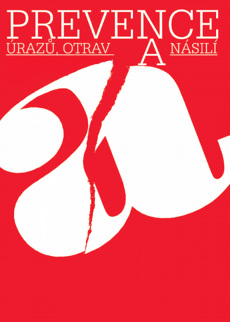SKRYTÁ NEBEZPEČÍ PARABENŮ
HIDDEN DANGERS OF PARABENS
Hon Zdeněk
Jihočeská univerzita v Českých Budějovicích, Zdravotně sociální fakulta, katedra radiologie a toxikologie
Korespondenční autor: Hon Zdeněk (Hon.Zdenek@seznam.cz)
ISSN 1804-7858 (On-line)
Full verze:
Submitted:11. 4. 2007
Accepted: 27. 4. 2007
Published online: 28. 6. 2007
Summary
Parabens, esters of p-hydroxybenzoic acid, are the most frequently used preservatives in cosmetic, pharmaceutical and industrial products. Acute and chronic studies in rodents demonstrate that parabens are essentially non-harmful. They are readily absorbed, metabolized and excreted. In persons with normal skin, they exert neither irritating nor sensitizing effects. However, the application of medicinal products comprising parabens onto damaged or affected skin can lead to its sensitization and subsequent dermatitis. In both in vitro and in vivo genetic tests, parabens are shown to be non-harmful. The chemical structure of parabens contains no groups that could suggest their carcinogenicity; this is also supported by experimental studies. Certain studies in laboratory animals demonstrate their negative effects on the reproduction. The ability of parabens to activate oestrogen receptors in vitro increases with prolongation of their alkyl chain. However, findings of parabens in certain tissue samples of mammary carcinoma and their adverse effects on the reproduction of experimental animals suggest that the problem should be considered, whether or not their use is actually safe.
Keywords: Parabens – preservatives - risk
Souhrn
Parabeny, estery kyseliny p-hydroxybenzoové, jsou nejčastěji používaná konzervační činidla v kosmetice, farmacii a průmyslových produktech. Akutní i chronické studie na hlodavcích ukazují, že parabeny jsou prakticky netoxické. Jsou rychle absorbovány, metabolizovány a exkretovány. U jedinců s normální kůží nemají iritační ani senzitizující účinek. Avšak aplikace výrobků obsahujících parabeny na poškozenou nebo porušenou kůži může vést k její senzibilizaci přecházející v dermatitidu. V genotoxických testech in vitro i in vivo se parabeny jeví jako neškodné. Chemická struktura parabenů neobsahuje nic, co by napovídalo o jejich možných karcinogenních účincích a experimentální studie to potvrzují. Některé studie na laboratorních zvířatech však svědčí o negativním účinku parabenů na reprodukci. Schopnost parabenů aktivovat in vitro estrogenové receptory se zvyšuje s prodlužujícím se alkylovým řetězcem. Nález parabenů v některých vzorcích tkáně rakoviny prsu a jejich negativní vliv na reprodukci u pokusných zvířat však vedou k zamyšlení, zda jejich další používání je opravdu bezpečné.
Klíčová slova: parabeny – konzervační látky – riziko
Literatura
- Cashman, A. L., Warshaw, E. M. 2005. Parabens: a review of epidemiology, structure, allergenicity , and hormonal properties. Dermatitis 16: 57–66.
- Darbre, P. D., Aljarrah, A., Miller, W. R., Coldham, N. G., Bauer, M. J., Pope, G. S. 2004. Concentrations of parabens in human breast tumours. J. Appl. Toxicol. 24: 5–13.
- Darbre, P. D. 2004. Underarm cosmetics and breast cancer. Eu. r J. Cancer. Prev.13: 153.
- Darbre, P. D. 2003. Underarm cosmetics and breast cancer. J. Appl. Toxicol. 23: 89–95.
- Daston, G. P. 2004. Developmental toxicity evaluation of butylparaben in Sprague-Dawley rats. Birth Defects Res. B. Dev. Reprod. Toxicol. 71: 296–302.
- Golden, R., Gandy, J., Vollmer, G. 2005. A review of the endocrine activity of parabens and implications for potential risks to human health. Crit. Rev. Toxicol. 35: 435–458.
- Goodman, L. S., Gilman, A. 1975 (eds.). The Pharmacological Basis of Therapeutics. 5th ed. New York: Macmillan Publishing Co., Inc., p. 992.Grant, W. M. 1986. Toxicology of the Eye. 3rd ed. Springfield, IL: Charles C. Thomas Publisher, p. 695.
- Hoffken, K. 2004. A warming by the German Cancer Society. Risk of breast cancer caused by deodorant sprays containing paraben? [Article in German] MMW Fortschr. Med. 146: 13.
- Che, J. H., Kim, T. W., Park, J. S., Ryu, D. Y., Lim, Y. K., Kang, K. S., Lee Y. S. 2001. Decreased sperm number and motile activity on F1 offspring maternally exposed to butyl p-hydroxybenzoic acid (butyl paraben) during gestation and lactation periods. Int. J. Environ. Physiol. Toxicol. 8: 224.
- Lemini, C., Hernandez, A., Jaimezm, R., Franco, Y., Avila, M. E., Castell, A. 2004. Morphometric analysis of mice uteri treated with the preservatives methyl, ethyl, propyl, and butylparaben. Toxicol. Ind. Health. 20: 123–132.
- McGrath, K. G. 2003. An earlier age of breast cancer diagnosis related to more frequent use of antiperspirants/deodorants and underarm shaving. Eur. J. Cancer Prev. 12: 479–485.
- Mirick, D. K., Davis, S., Thomas, D. B. 2002. Antiperspirant use and the risk of breast cancer. J. Natl. Cancer Inst. 2002 94: 1578–1580.
- Oishi, S. 2004. Lack of spermatotoxic effects of methyl and ethyl esters of p-hydroxybenzoic acid in rats. Food Chem. Toxicol. 42: 1845–1849.
- Osol, A., Hoover, J. E. et al. 1975 (eds.). Remington's Pharmaceutical Sciences. 15th ed. Easton, Pennsylvania: Mack Publishing Co., p. 1090.
- Pugazhendhi, D., Pope, G. S., Darbre, P. D. 2005. Oestrogenic activity of p-hydroxybenzoic acid (common metabolite of parabel esters) and methylparaben in human breast cancer cell lines. J. Appl. Toxicol. 25: 301–309.
- Soni, M. G., Karabin, I. G., Burdovo, G. A. 2005. Safety assessment of esters of p-hydroxybenzoic acid (parabens). Food Chem. Toxicol. 43: 985–1015.
- Tzimas, G. 2004. Safety evaluation of cosmetics and pharmaceuticals with respect to developmental and reproductive toxicity: A review. Reprod. Toxicol. 18: 751.
